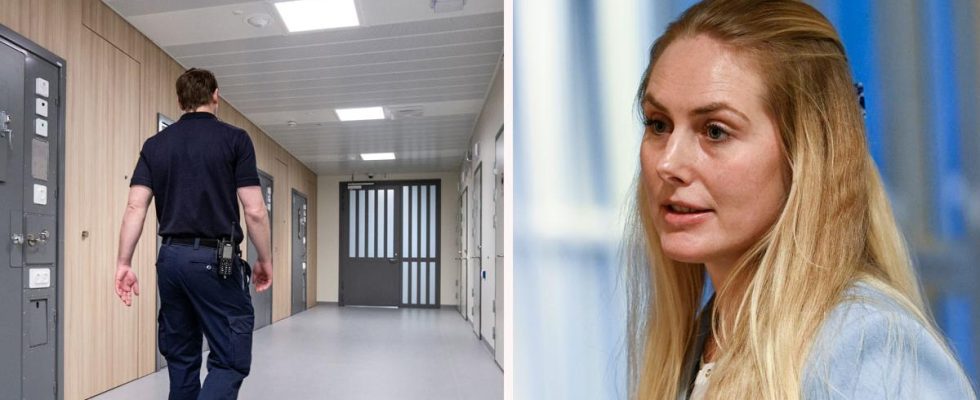Save the article
The Correctional Service has raised the alarm that children’s rights are not being met in custody.
But the option that you would rather see the children on, Sis, is currently not relevant.
– If it could have been a reassuring monitoring, it would have been a much better alternative, says prosecutor Karin Hammar.
Quick version
ⓘ The summary is made with the support of AI tools from OpenAI and quality assured by Aftonbladet. Read our AI policy here.
Show more
The number of children in detention has increased.
Aftonbladet has previously been able to tell about the detained children’s own testimonies from inside the detention centers – and that the statutory requirement for four hours of isolation-breaking measures is not being met.
Just like the Prison Service, prosecutors believe that the development is worrying.
– It has gone very fast, it didn’t look like this a year ago and the Correctional Service has not had the resources, I suppose, to meet the need that now exists. I understand that there have been problems and that they don’t have time, it’s not good. It’s worrying and something they have to find a solution to, says Chamber prosecutor Karin Hammar.
“Must find a solution”
Karin Hammar works on weekdays at the Prosecutor’s Office in Söderort in Stockholm and has had several cases involving young people, including during the wave of violence in January. Many of them are suspected of very serious crimes.
She reacts to the fact that many people do not get their rights met.
– It is certainly individual too, some may be able to handle it better than others. But it is clear that you have to make sure that they get the best conditions possible, in order to then come out and function as normal people, says Karin Hammar.
Through lawyers, Aftonbladet has asked questions about what it is like to be detained as a child.
This is how a 17-year-old answered about life in detention.
“Before I was detained, I went to school and had good grades in all subjects. I have had to cancel it and have not been allowed to study in detention. I get to talk to a priest 1-2 times a month, it’s nice. You get too little food.
Nobody gets better in here, but you create an atmosphere where you start to hate.”
“Nothing happens on my days. The video room is never free so I never go out. Not going out for a walk either because I’ve been sad. The promenade is dirty. Spit everywhere. Bird shit. GRID. They sit and listen when you go for a walk.”
More children detained
Recent figures produced by the Norwegian Prison and Probation Service for Aftonbladet show how the number of detained children, i.e. persons younger than 18, has increased sharply in recent years.
It is about a total of 71 pieces.
Among the children who are in custody today, several are suspected of crimes as serious as murder. Among them is a high-profile case involving a suspected triple murderer. He is 15 years old and is suspected of shootings in Västberga and Tullinge.
From both the Correctional Service and lawyers, there has been criticism that the requirement for the isolation-breaking measures is not being met.
Because all the country’s prisons are overcrowded, the detainees are not allowed to leave their cells for as many hours as they are entitled to.
– You have to bear in mind that even if these children are suspected of serious crime, they have not yet been convicted. Some of them may never be either. And regardless of what they did or did not do, they have rights that are now not fulfilled. And it is serious, lawyer Seher Nuredini has previously told Aftonbladet.
Too many escapes on Sis
One alternative, explains prosecutor Karin Hammar, is to place the children in Sis homes. A place that has been plagued with problems such as escapes and that other prosecutors have described as a “Linkedin for criminals.”
But at present there is no alternative to placing the children who are suspected of crimes there.
– I think most prosecutors would have considered that a Sis placement would have been a better option. But we don’t see those places as reassuring surveillance. They escape from there and are released from there – but also continue their criminal activities from inside the homes. Then there is no other alternative than to have them detained, says Karin Hammar.
When it comes to detained children, there is a time limit on detention of three months. It must not be exceeded unless there is a reason.
– But these are complicated crimes that take time to investigate. It has to be done properly and then it sometimes takes longer than three months. But it is not something that is sought after, but it should go as quickly as possible, especially when it comes to young people.
